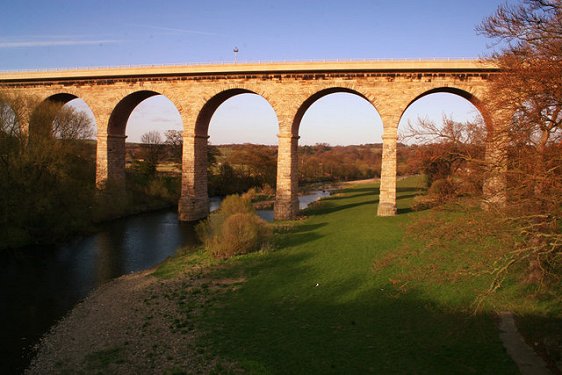 Bishop Auckland Town Hall: Source: https://commons.wikimedia.org/wiki/File:Bishop_Auckland_Town_Hall_-_geograph.org.uk_-_1412124.jpg
Bishop Auckland Town Hall: Source: https://commons.wikimedia.org/wiki/File:Bishop_Auckland_Town_Hall_-_geograph.org.uk_-_1412124.jpgAuthor: Neville Davison

Bishop Auckland is a market town in County Durham, England. Located at the confluence of the River Wear and its tributary, the River Gaunless, it has a population of 24,000 people (2012 estimate).
The name Bishop Auckland has to be explained in two parts. The "Bishop" is said to have been derived from the Bishop of Durham while "Auckland" may have been a Celtic name for the River Gaunless. Bishop Auckland was first mentioned in the 11th century. For much of its history is linked to the Bishops of Durham.
Auckland Castle, also called Bishop's Castle, dates back to 1183, when Bishop Pudsey established a manor house on the site. It became the official residence of the Bishop of Durham in 1832.
As with a number of towns in Britain, Bishop Auckland became a major industrial town during the 19th century. It was a railway hub, which helped move large amounts of coal, limestone and ironstone from the surrounding region to the coast. The coal mines went into decline in the 20th century, sending unemployment rates to hit 27% in the 1920s.
 Newton Cap Viaduct, Bishop Auckland: Source: https://commons.wikimedia.org/wiki/File:Newton_Cap_Viaduct-by-Neville-Davison.jpg
Newton Cap Viaduct, Bishop Auckland: Source: https://commons.wikimedia.org/wiki/File:Newton_Cap_Viaduct-by-Neville-Davison.jpgAuthor: Neville Davison

Today the economy of Bishop Auckland is based on manufacturing. It also has a strong retail sector with a number of shopping centers in town.
Visiting Bishop Auckland
Take the A1(M) motorway from London until Exit 60, then head west on the A689 road towards Bishop Auckland. The A689 continues as the A688 after the roundabout as you approach town.Places of Interest in Bishop Auckland
- Auckland Castle: Historic castle that was the official residence of the Bishop of Durham since 1832.
- Binchester Roman Fort: Well preserved Roman military installation in Bishop Auckland.
- Bishop Auckland Town Hall: Victoria-era town hall today housing a public library, a theater and an art gallery.
- Escomb Saxon Church: Ancient church building that dates to AD 670.
- Newton Cap Viaduct: Victorian era railway viaduct crossing the River Wear.
- St Andrew's Church: The largest church building in County Durham.
 Latest updates on Penang Travel Tips
Latest updates on Penang Travel Tips

Copyright © 2003-2025 Timothy Tye. All Rights Reserved.

 Go Back
Go Back